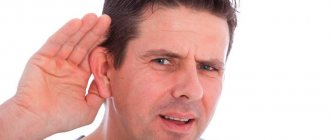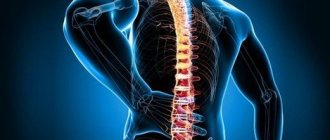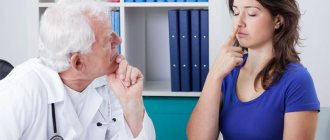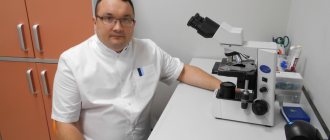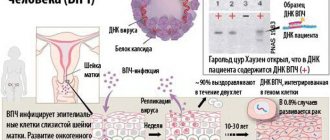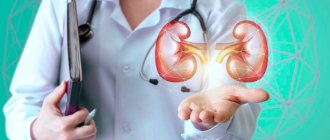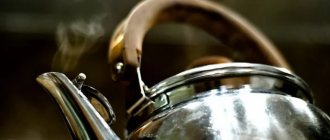Trichology is a branch of dermatology and cosmetology that studies the structure, physiology, condition, growth phases, treatment methods, and diseases of hair not only on the head, but throughout the body. As a science, trichology has been known in Russia relatively recently - since the end of the 20th century. At the same time, the first specialists appeared - trichologists. And although the specialty trichologist did not appear in the list of professions of the Ministry of Health, the number of dermatologists with a narrow focus on trichology is growing day by day.
In Western countries, trichology is very developed. Foreign experts unite in associations, specialized societies, and institutes for the study of hair.
Symptoms of hair and scalp diseases
If you are unhappy with your hair, if every day it more and more often remains not on your head, but on your comb - do not hesitate, come to the SM-Clinic trichologist. It is important to remember that hair is not only a decoration, but also a clear indicator of a person’s general health. Therefore, it is worth considering if you experience the following symptoms:
- hair began to split, break, become thinner, quickly get dirty, lose its usual shine and volume, thin and fall out;
- the scalp began to itch, become inflamed, spots and scratches formed on it, the skin became too dry or, on the contrary, oily, and dandruff appeared, which no shampoo can cope with.
Don’t expect these alarming signs to disappear on their own; make an appointment with a SM-Clinic trichologist. Only a consultation with a qualified trichologist will help identify the cause of the disease and choose the right treatment. There are a great many factors that cause hair to lose its healthy appearance, or even fall out altogether:
- hormonal changes in the body during pregnancy, breastfeeding, menopause, etc.;
- diseases associated with inflammation of the scalp;
- lack of substances necessary for the body (iron, protein, etc.);
- hair damage due to previous illnesses or medications;
- disruption of the endocrine system;
- deterioration of hair condition associated with hereditary predisposition.
You can get a consultation with a qualified SM-Clinic trichologist without queues at any time convenient for you, including after work and on weekends.
In what situations is it necessary to make an appointment with a trichologist?
The photo shows various degrees and types of damage to the rods.
There are a number of symptoms that should alert you. When they appear, it is better not to self-medicate. These include the following situations:
- When there is excessive hair loss, a trichologist is simply necessary. Moreover, regardless of whether the shedding of strands occurs randomly or focally. Sometimes both can be a symptom of a serious illness. The doctor will promptly determine the causes and prescribe appropriate therapy. This will eliminate many further complications.
- Changes in hair structure. If they have become thinner, duller, brittle, sparse and split, it is advisable not to put off visiting a trichologist.
- The appearance of seborrhea of any type. In most cases, dandruff, especially oily dandruff, is a consequence of disturbances in the sebaceous glands of the scalp. A specialist will identify their cause and recommend comprehensive ways to combat it.
- Early graying. The appearance of gray hairs at a young age may indicate problems in the body, which a trichologist will identify.
What diseases does a trichologist treat?
The list of things that a trichologist treats is very wide. Hair and scalp diseases usually manifest themselves in the form of noticeable external changes:
- baldness (alopecia) - complete, partial or focal;
- early graying;
- oily seborrhea – increased fat content;
- dry seborrhea – weakness, brittle hair, dryness and lifelessness;
- dandruff;
- hair weakness, poor growth;
- infectious diseases and parasites - lichen, lice, subcutaneous mites.
Trichologist's advice
Now you know who a trichologist is and what he treats, which means you should listen to his recommendations for preserving the beauty, and most importantly, the health of your hair. And they are as follows:
- People have different hair types, so almost all shampoo manufacturers have separate lines for oily, dry and normal hair. Be sure to choose cosmetics that meet this criterion;
- Hot and frosty weather equally negatively affects hair, protect it with a hat from the sun's rays and a hat from the cold wind;
- If the hair loss is severe, try cutting it off;
- Massage your scalp daily; a wooden brush is great for this purpose;
- Before going to bed, comb your hair along the entire length, starting from the bottom, reaching the roots;
- Use hair dryers, curling irons, as well as varnishes, foams and gels as little as possible;
- When painting, opt for professional ammonia-free products;
- To stimulate hair growth, trichologists developed a method of pulsed action on the scalp - darsonvalization. Hair mesotherapy has a similar effect, but a different operating principle. The procedure is based on subcutaneous injections with active substances.
Consultation with a trichologist. At the initial appointment, the trichologist will listen to your complaints, find out when problems with your hair or scalp began, and inquire about the condition of the hair of your closest relatives, since genetic mechanisms in this case are of great importance. The doctor will definitely clarify information about the stress you have experienced, how and what you eat, whether you are taking strong medications, or whether you suffer from chronic diseases. Diagnosis of hair and scalp diseases. If examination of the hair and scalp is not enough to make a diagnosis and some conclusions require clarification, the trichologist will prescribe the necessary laboratory tests, such as determining hormonal status, biochemical blood test, etc. In our clinic “SM-Cosmetology” You can additionally undergo hardware diagnostics of the condition of your hair and scalp (computer trichoscopy and phototrichogram). If necessary, a trichologist will refer you to a consultation with: a neurologist, endocrinologist, gastroenterologist, since hair problems can be caused by diseases of the gastrointestinal tract, endocrine and nervous systems. Hair and scalp treatment. Having received research data and familiarized with the opinions of colleagues from other fields of medicine, the trichologist will prescribe conservative treatment (medication, physiotherapy), and recommend products for home care and prevention of hair diseases. The SM-Cosmetology clinic provides comprehensive hardware hair treatment using the Tricoprogram device. The SM-Clinic provides various physiotherapeutic and injection procedures aimed at treating hair and scalp. Plasma therapy is an innovative method of healing the scalp, which is based on the ability of the patient’s own blood platelets to “wake up” the cells and stimulate their normal functioning. As a result, hair loss stops, inflammation disappears, and the activity of hair follicles is restored. Blood is taken from the patient in the same way as in a regular analysis from a vein, then it is divided into fractions in a centrifuge. The doctor receives plasma enriched with activated platelets. The trichologist injects this plasma into problem areas of the patient’s scalp through microinjections. Mesotherapy is also a method of healing the scalp and hair; instead of enriched plasma, the trichologist uses a special meso-cocktail from the necessary drugs: vitamins, microelements, amino acids, etc. The SM-Clinic uses therapeutic cocktails from the Mesoline Hair series (Spain) . The ozone therapy method, which involves introducing an ozone-oxygen mixture through microinjections, also helps to revive and normalize the functioning of hair follicles. Thanks to this procedure, blood flow improves and the best supply of nutrients to the hair growth point is ensured.
A proven method of treating the scalp and hair is cryotherapy (cryomassage) - cold treatment. The doctor, combing the patient's hair into partings, massages it with a swab with liquid nitrogen. Instant cooling of the scalp has a good therapeutic effect: blood rushes to the site of treatment, nutrition of the epidermal tissue improves, the work of skin cells is activated, and hair grows better. To achieve the best effect, the methods can be used in combination.
What do such specialists treat?
Initially, this medical field arose as a branch of dermatovenerology. This science, in comparison with the latter, studies various problems associated exclusively with the skin and scalp. Accordingly, the main field of activity of specialists in this field is diagnosis, treatment, and prevention of any pathologies in this segment.
Appointment with a trichologist.
INTERESTING! This specialty is still missing in the domestic classification of professions of the Ministry of Health. But, despite this, interest in it is growing, and in 2008 the Russian Society of Trichology was even opened.
A mandatory appointment with a trichologist includes several stages:
- Anamnesis collection. This includes a visual examination of the scalp and curls, a conversation with the patient, and consideration of complaints.
- Diagnostics. Only after the first point and an adequate assessment of the situation, the specialist decides on the choice of diagnostic method and the tests that will need to be taken. As a rule, these are general laboratory parameters of blood and urine, as well as a study of hormonal levels (mandatory in most cases). The purpose of this is to identify the causes of existing pathological conditions. The choice and effectiveness of further therapy will depend on the results of a competent examination.
- Consultation with other doctors. In addition to his recommendations, to draw up a complete picture of the disease, the trichologist can refer the patient to undergo additional examination by an endocrinologist, gynecologist and other specialists.
- Making a diagnosis and prescribing therapy. Only after all the examinations have been carried out, the doctor can accurately identify the cause of the problems. Based on it, the most appropriate treatment, as well as preventive measures, are selected.
A qualified, good hair trichologist does not skip the above steps during his appointment. Before going to him for a consultation, you should at least read reviews about him.
List of diseases in which a trichologist is competent
Sometimes people turn to such a doctor to simply visually improve the condition of their locks. But usually the reason for a visit to him is certain diseases:
- ringworm and asbestos lichen;
- baldness of various types and forms (diffuse, focal, genetic and other alopecia);
- mycoses of the epidermis (microsporia, trichophytosis and others);
- diseases of the bulbs of a purulent (mentagra) and infectious nature;
- parasitic infection, including pediculosis;
- early gray hair;
- dropping out;
- seborrhea and dandruff.
Separately, it is worth highlighting such a hereditary disease as curl atrophy. This pathology is detected during the first year of life. To diagnose and treat it, you will need a pediatric trichologist.
ON A NOTE! Such a doctor does not deal with pathologies of internal organs. And since changes in the condition of the hair and skin of the head can be symptoms of serious systemic or infectious diseases, he often works in conjunction with endocrinologists, infectious disease specialists, gastroenterologists, and gynecologists.
Make an appointment with a trichologist
SM-Clinic receives highly qualified trichologists, you can make an appointment with them at any convenient time by calling the multi-channel 24-hour phone number +7 (495) 292-39-72 or filling out the appointment form on the clinic’s website. Our doctors work on weekdays, weekends and holidays. You can find out more details and make an appointment with a trichologist by phone
To be beautiful means to be healthy. When it comes to hair, this truth is undeniable.
We all naturally have different hair. But most of us are familiar with the anxiety when we suddenly notice that our hair is catastrophically thinning and falling out, itching of the scalp, dandruff, baldness appear - such problems remain unattended until this condition becomes a serious problem.
These problems can be solved by a dermatologist-trichologist, who will help determine the true cause of hair diseases, give recommendations for further hair care, and provide high-quality and effective treatment.
The diagnostic and treatment center is located on the basis of the Republican Clinical Dermatovenerological Dispensary - this is the only center in Kazan that operates on the basis of a state medical institution, which is a guarantee of quality service and treatment for our patients.
Trichology carries out hardware and drug treatment of hair and scalp.
The work uses a unique hardware and software complex. The office is equipped with the necessary equipment and equipment to provide complete and high-quality treatment to patients.
The center treats baldness, thinning, damage to the hair shaft, dandruff, seborrhea, itching of the scalp, etc.
- A unique course of treatment and restoration procedures using high-quality procedures, effective and affordable drugs and hair care products.
- Hardware treatment of the scalp and hair: vacuum massage, peeling of the scalp, electrical stimulation, microionization.
The center's staff practices an individual approach to each patient.
Affordable prices in the center.
The treatment uses methods and drugs that have been tested and successfully used in specialized trichological centers in Italy (Trichology-INTEGRE), which is an advanced structure in the treatment of hair diseases, using a unique hardware and software complex “Tricoprogram”.
Thanks to the modern procedures of our center, you can state that the problems of dandruff, oily hair, and hair loss can be solved in a short time.
Causes and treatment of baldness
At different stages of life, most people encounter a disease such as alopecia.
This is its scientific name, in simple terms – hair loss. Normally, even in healthy people, they fall off, because the natural process of their renewal occurs. Trichologists have calculated this norm; on average, it is up to 100 hairs. At the same time, it is important to pay attention to their root, it must be light, otherwise things are bad. The most common causes of pathological scalp loss are:
- Carrying out chemotherapy or taking strong drugs, often antibiotics, that can depress the body’s strength;
- Diseases of the nervous or hormonal system;
- Stress, depression, chronic fatigue;
- Lack of vitamins, usually a seasonal phenomenon;
- Maintaining a strict diet, fasting, or simply poor-quality nutrition affects the functioning of the entire body, as well as your curls;
- Hypothermia of the head in the cold season;
- The opposite effect - heating the hair, also negatively affects its condition, leading to deterioration in quality and hair loss. We are talking about using a hair dryer, curling irons, and straightening irons;
- During puberty, pregnancy, after childbirth, during menopause, the endocrine system undergoes a serious imbalance, which is detrimental to hair.
Treatment in this case should be comprehensive and consist of:
- from vitamins,
- drugs that improve microcirculation and correct immunity,
- hormones,
- other drugs taken orally, or injected directly into the affected area through injections.
Currents, ultraviolet radiation and cryomassages have found effective use in trichology.
Our Doctora.Su service will select a doctor for you for free when you call our Unified Appointment Center by phone. We will find an experienced doctor near you, and the price will be lower than if you contact the clinic directly.
Maria Alexandrovna, what do you advise people who have problems with their hair and scalp?
- First of all, do not self-medicate. As a rule, it is simply impossible to independently determine the cause of the disease, and the use of “folk” or widely advertised remedies may turn out to be not only ineffective, but also dangerous. Remember that improper treatment often leads to progression of the disease, which can result in hair loss and even baldness. Take care of your beauty and your health!
9. Don't be afraid to comb your hair! When the natural phase of hair loss begins (and it lasts 5-6 weeks), many people make the mistake of trying to use a comb less often so that as little hair falls out as possible. The fact is that outdated, almost dead hair can stay in the hair socket for a long time. And it is already supported by a new, healthy hair. Comb your hair and renew your hair!
10. 50% of the sebum on the surface of our entire body is produced by the scalp! Exfoliating this area at least once a week is a useful and necessary ritual. But use the right exfoliants. Salt scrubs are generally taboo. They not only scratch the skin, but also draw water from the epidermis. For the scalp, the best option would be chemical peels based on glycolic acid - it easily dissolves sebaceous plugs. In trichological lines, you can choose a peeling specifically for your skin type: salicylic, clay or glycolic.
11. How to independently determine your scalp type without a trichoscope? Ask yourself: how often should you wash your hair?
* daily – fatty type.
* Once every 5-7 days – dry type.
* Once every 2-3 days – combined type (absolute norm).
12. Oily roots and dry ends are a complaint of 60% of girls who turn to a trichologist. Why is that? The culprit is the wrong shampoo. The average girl, not taking into account scalp problems, selects shampoo not for the skin, but for the hair shaft (usually in a supermarket): to moisturize, glue split ends, and give smoothness. This shampoo contains excess silicones, oils and conditioning agents to smooth out the shaft. Its pH is usually higher than the pH of the scalp, so it is not able to effectively cleanse it of sebum, dust and horny scales. The roots are becoming fatter, but the trunk still does not receive sufficient moisture. An ideal shampoo will quickly solve this problem.
13. All you need to demand from a shampoo is high-quality cleansing. This is exactly what it is designed for. Sulfates and parabens are the two main cleansing ingredients in shampoo. They are the ones who rid the skin of fat. But sulfates and parabens come in different qualities: low-cost petroleum products (as in mass-market products) or expensive-to-produce extracts from plant extracts, such as coconut. The cost of these ingredients is reflected in the price. The truth is: you have to pay for quality.
14. Oily scalp has a pH of 7.0-7.2; it is well cleaned by a slightly acidic shampoo with a pH of 3.2-3.5. If the scalp is dry – its pH is 2.3, a shampoo with an acidity of 6.0 will help cleanse and bring its acidity back to normal (this is the pH of children’s shampoos “without tears”, and also the pH of the eye shell, so they do not “sting the eyes”).
15. Wash your hair as it gets dirty, even if you have to do it twice a day. Near each hair follicle there is a sebaceous gland that produces sebum. Some have only one, some have two, and some have six! It's genetics.
16. If your scalp needs washing too often, buy two shampoos - deep cleansing and neutral. And alternate them. The neutral pH will always be between 5.0 -5.5 (the bottle is usually marked “for daily washing”). Then the epidermis of the scalp will not be overdried and will no longer compensate for the lack of moisture with sebum.
17. Conditioner and oil rubbed into the hair roots will not moisturize dry skin. Need to moisturize your scalp? Refer to trichological care lines. In them you will find moisturizing serums and lotions based on hyaluronic acid. Their textures and compositions easily penetrate the skin, do not form an occlusive film and do not provoke an increase in greasiness.
18. Attention! Scalp type can change throughout life! Today you wash your hair every day, and your four (or all six) sebaceous glands are working at full capacity, and tomorrow you moved to another country where the climate, composition, acidity of the water, as well as changes in diet, slow down the rate of sebum production. And now you wash your hair once every three days! Or pregnancy has occurred and estrogen has increased. And (bingo!) you are the lucky owner of a normal scalp. Choose a shampoo based only on the current condition of your hair. Don't be driven by force of habit.
19. After the pool and gym, wash your hair with shampoo! Use neutral pH 5.0-5.5. It will cleanse the skin of salts that were developed with sweat during training, and will bring the acidity of the head back to normal after chlorine from the pool.
20. Healthy volume and platinum blonde is a difficult task, but quite realistic. Despite the fact that lightening destroys the cuticular layer and the hair not only falls out, but also breaks in the shaft, this can be successfully combated with the help of intensive home care and salon procedures. The number one goal for colored blondes is hydration. Mandatory ritual: conditioner, mask, oil, daily spray serum for hydration throughout the day. And the “heavy artillery” in the form of a course of salon moisturizing will help not only maintain length and thickness, but also make the blonde truly luxurious.
21. It would be useful to remind you that conditioners, masks and oils are applied only to the shaft and ends.
22. Keratin lamination does not treat hair. It contains heavy silicones, which simply seal the cuticle with a hot iron for a certain period of time, for example, two months. After two months, the silicone leaves the hair along with the scales of the cuticular layer, and you will notice that the condition of the curls has become much worse than before lamination. An alternative to hot lamination is procedures with cocktails of hyaluronic acid, peptides, ceramides and minerals. This moisturizing mixture is introduced into the hair using a special ultrasonic gadget without destroying the cuticle. This procedure works for the long term, and not just for two months.
23. A glass of good red wine in the evening can slightly stimulate hair growth. Red wine contains plant estrogens and stimulates our fibroblasts to produce healthy divisions. And fibroblasts produce collagen, elastin and hyaluronic acid. A healthy, moisturized scalp means healthy hair. Unless, of course, you limited yourself to just one glass.
Trichology: treatment of hair loss with basic methods
The most popular treatments for hair loss are professional treatment options. Trichologists recommend hardware cosmetology . It can be carried out in centers under the supervision of a doctor.
Such therapy includes:
- vacuum massage for the head, which trains the hair follicles and normalizes the microcirculation of the blood vessels of the head;
- microcurrent therapy to stimulate growth;
- electrophoresis, which promotes the appearance of new hairs;
- laser therapy (roots are treated with cold laser).
There are no products that are guaranteed to help against hair loss . Each method has its drawbacks, because any treatment option does not affect the entire body, but fights a specific problem.
For treatment, you can use masks, balms, sprays, lotions, balms or shampoos. If you follow the basic rules, the likelihood of hair loss will decrease several times. But for this it is necessary to provide the skin and strands with good care.
Popular remedies for hair loss are:
- Vitamin complexes. If the diet is unbalanced, the body lacks certain substances. Trichologists believe that it is important to take drugs such as Pantovigar, Merz, Aevit, Vitrum Beauty and Revalid.
- Folk remedies . Homemade recipes are effective in maintaining hair health. Pamper yourself with masks based on oils and natural products.
- Cosmetics . Sprays, masks, and shampoos from the pharmacy are useful and effective products that doctors prescribe to restore hair. Trichologists recommend such cosmetics as Fitoval, Alerana, Generalol, etc.
Important: Before purchasing vitamins or other dietary supplements, consult your doctor. Perhaps you have hypervitaminosis and this is the source of the problem.
To stop baldness, you must adhere to the general advice of trichologists against hair loss:
- shampoo should contain a maximum of natural substances;
- medicinal products should be used only during the course (no more);
- massage before washing, use masks, add oils;
- add chamomile, henna, yarrow, oak bark to rinses;
- protect your strands from weather changes (frost, sun, heat, precipitation) and wear a headdress (warm hats in winter, scarves or hats in summer). Read about environmental influences and seasonal hair loss here.
Trichologists prescribe medicated shampoos, pharmaceuticals, tablets, and healing masks. They should be used only for the period recommended by the doctor. It is better not to use such methods on your own, because... everything is good in moderation.
Excessive hair loss is often observed after childbirth. The process of bearing a child slows down the effect of hormones, and hair strands hardly fall out during this time.
But when the baby is born, the woman loses a lot of hair. This can be scary for a new mother. True, after a couple of months the process will stop and the loss will return to normal.
If 90 days after giving birth this does not happen and the strands are still falling out intensively, you need to contact a trichologist.
First consultation with a trichologist
Photo: www.wimpoleclinic.com
At the first meeting, the specialist conducts a so-called trichological diagnosis, which is a kind of “background review” of the hair. To make the examination reliable, you must prepare for the first visit. Namely, do not wash your hair 1-2 days before your scheduled visit to help the specialist evaluate how your sebaceous glands are working. In addition, you should refrain from using hair care products (hair sprays, mousses, gels, etc.). Last but not least, you should not dye your hair before visiting a trichologist. However, if you really need it, you can have them dyed, but it will take a few weeks before your first consultation.
What diseases does a Trichologist deal with?
– Diffuse alopecia (baldness); – Focal (area) alopecia, alopecia, alopecia areata; – Telogen effluvium (hair loss, diffuse alopecia); – Androgenetic alopecia; – Graying of hair (premature and early greying); – Dandruff; – Seborrhea; – Changes in the appearance of hair – dullness, fragility, split ends, etc.; – Hirsutism, hypertrichosis; – Asbestos lichen; – Hair atrophy; – Purulent inflammation of hair follicles; – Thinning hair; – Ring-shaped hair; - Lupus erythematosus; – Mentagra; – Mycoses (fungal diseases); – Scab (favus); – Microsporia; – Trichophytosis (ringworm); – Pediculosis (lice).
What questions might a trichologist ask you?
First of all, the trichologist will listen to your complaints and ask a few questions:
- questions about hereditary diseases
- questions about past illnesses and medications you took
- questions about hair care procedures (how you wash your hair, what cosmetics you use for your hair, how to dry your hair, styling, coloring)
- questions about eating habits and diets you follow
- questions about your emotional and mental state (for example, have you been stressed lately and how do you sleep at night)
- questions regarding contraception and others related to your hormonal system
Trichologist what does this doctor treat?
Who is a trichologist?
A trichologist is a doctor specializing in a dermatological profile, but working in depth in the direction of diseases of the scalp. Trichology as a science was formed in the middle of the 20th century, although it came to Russia only towards its end. The appearance of the first domestic specialists dates back to the 2000s, however, this profession never received official recognition, since the Ministry of Health believes that this is a subsection of dermatology. Of course, you won’t find a trichologist in any clinic, but every year more and more of them appear, which means that our medicine is undergoing progressive changes.
There are only two structures in his area of interest:
- hair;
- the skin underneath.
However, a trichologist needs to know everything about their structure and functions, as well as all the causes, symptoms, and stages of development of pathologies associated with them. And so you understand, in addition to such phenomena as dandruff or seborrhea, a much more serious disease can occur, for example, mycosis, lichen, purulent damage to the hair follicles, early gray hair, etc.
We have defined who this specialist is, let’s take a more in-depth look at what a trichologist treats, and take a detailed look at the main types of diseases.
What are the main types of diagnostics usually carried out by a Trichologist?
– computer microscopy; – trichogram – taking several dozen hairs and examining them under a microscope to determine the percentage of hair in different stages of development – anagen, telogen, catagen; – skin biopsy with conventional hematoxylin-eosin staining is a clinical diagnostic method for many skin tumors that cannot be diagnosed visually. – incisional biopsy is incomplete or partial removal of the pathological formation down to the subcutaneous fat, followed by layer-by-layer suturing of the skin. – phototrichogram; – computer microscopy.
Sources
- https://DocDoc.ru/library/Chto_lechit_vrach_trikholog
- https://SimptoMer.ru/doctor/trikholog
- https://SimptomyInfo.ru/spetsializatsiya/147-trixolog.html
- https://doctora.su/articles/kto-takoj-triholog-i-chto-on-lechit
- https://www.PiterMed.com/doctors/1851/
[collapse]
Treatment of hair diseases at the ABIA Clinic:
Depending on the diagnosis, the trichologist draws up an individual hair treatment plan, which may include:
- drug therapy (use of various medications, vitamins, microelements)
- external treatment (use of lotions, shampoos, aerosols, therapeutic masks and serums)
- physiotherapy (microcurrent hair therapy)
- injection hair treatment (hair mesotherapy and hair plasma lifting)
- therapeutic scalp massage
- according to indications, recommendations are given for hair transplantation using the FUE Follicular Unit Extraction method
Control inspection. Hair treatment is a labor-intensive process and the first results in the fight for beautiful hair can be assessed no earlier than after 3 months using the phototrichogram method.
Therefore, when turning to a trichologist for help, you should understand that the doctor is not able to make hair grow faster than what is inherent in the genes; by consistently following all the specialist’s recommendations, hair loss will be stopped!
Many people, faced with problems of hair loss, brittle hair, dandruff or itching, use special shampoos, balms, and masks for treatment. But no one thinks that these may be symptoms of a serious disease, getting rid of which does not lead to the elimination of the disease. And accordingly, after some time they are faced with a more severe relapse and complications for which no homemade decoctions or masks will help. The growth and healthy condition of hair is largely due to the proper functioning of the sebaceous and sweat glands. For example, improper functioning of the sebaceous glands can lead to dandruff and the development of seborrhea.

